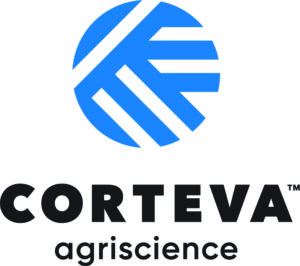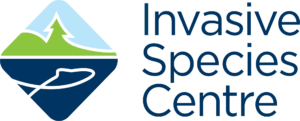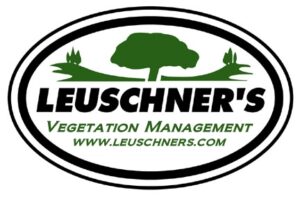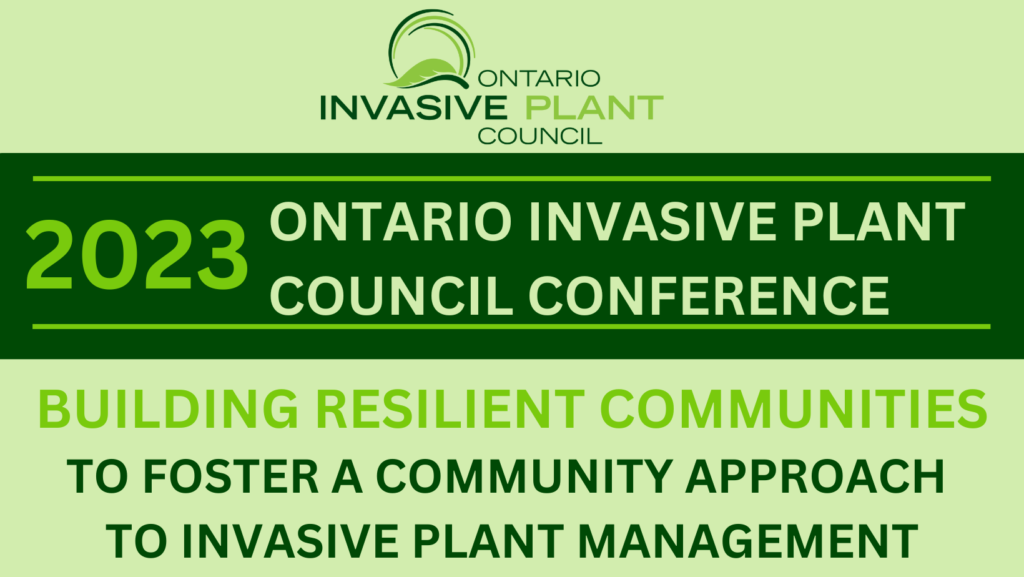
The 15th Annual Ontario Invasive Plant Council Conference took place virtually on Wednesday January 18th, 2023
The 2023 OIPC Conference Theme was Building Resilient Communities!
We showcased people working together towards healthy ecosystems and biodiversity in a changing climate to foster coordinated action towards invasive plant management.
CLICK HERE TO WATCH RECORDINGS OF THE EVENT
Click Below to Download the Event Agenda
Keynote Speaker: Dr. Kurt Dreisilker

Kurt Dreisilker is the Head of Natural Resources and Collections Horticulture at The Morton Arboretum in Lisle, Illinois, where he plans and implements ecological restoration and horticultural maintenance programs. Kurt’s work within a public garden has provided him with a unique perspective on plant invasions since plants from around the world are utilized in many capacities throughout Arboretum programs. He is Treasurer for Midwest Invasive Plant Network. Kurt has a B.S. in plant biology and a M.S. in Natural Resources and Environmental Sciences from University of Illinois at Urbana-Champaign.
North American Gardens as Sentinels Against Invasive Plants
Kurt Dreisilker
The Morton Arboretum
Botanic gardens and arboreta in North America are harnessing their botanical and horticultural expertise to document plant taxa that are escaping from cultivation on their properties. This is accomplished by collecting, synthesizing, and sharing data about the extent that taxa spread from their original sites of cultivation into adjacent areas of their property. However, these data are much more impactful if collected, structured, and shared using a common methodology. To this end, the Public Gardens as Sentinels against Invasive Plants (PGSIP) working group has developed standardized guidelines to help gardens organize and share their data from their collections to characterize these situations when they occur. PGSIP also developed a database for gardens to upload their data and access information about plants spreading from cultivation at other gardens. By collecting and sharing data from gardens across North America, PGSIP aims to provide a clear picture about plants escaping cultivation and potentially becoming problematic before large-scale invasions occur and before commercial adoption of these taxa.
Spotlight Talk: Samantha Tank
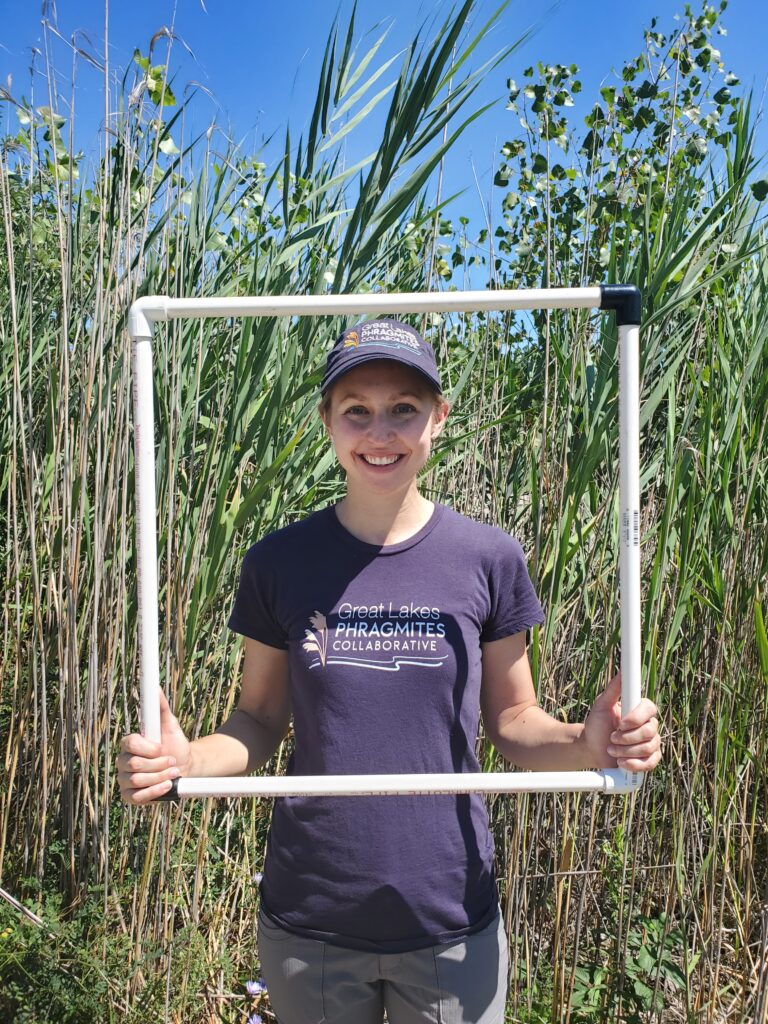
Sam is a project manager for the Great Lakes Commission’s aquatic invasive species program. In this role, she coordinates three invasive species collaboratives including the Great Lakes Phragmites Collaborative and Phragmites Adaptive Management Framework, the Invasive Mussel Collaborative, and the European Frog-bit Collaborative. Sam also provides staff support to the Great Lakes Panel on Aquatic Nuisance Species. Prior to joining the Commission’s staff in 2018, Sam attended Michigan State University where she earned both her bachelor’s and master’s degrees in fisheries and wildlife.
Enhancing and Expanding the European Frog-bit Collaborative Across the Great Lakes
Samantha Tank
Great Lakes Commission
European frog-bit (Hydrocharis morsus-rane L.; EFB) is an invasive free-floating aquatic plant of growing concern to resource managers, waterfront property owners, and recreational users due to its continued spread and potential negative effects on Great Lakes coastal wetlands and inland waters and wetlands. The EFB Collaborative was established in fall of 2018 to improve coordination and collaboration among stakeholders and build consensus on next steps for EFB management and research in Michigan. Recent EFB detections in additional Great Lakes jurisdictions including Wisconsin, Ohio, Pennsylvania, New York, and Ontario have caused EFB to become a management priority in a significant portion of the basin resulting in state and tribal interest to expand the EFB Collaborative beyond Michigan. In October 2022, the Great Lakes Commission received funding through the Great Lakes Restoration Initiative to provide backbone support and expand the EFB Collaborative across the Great Lakes basin.
The EFB Collaborative has developed GIS-based tools for both prioritizing locations for EFB monitoring and field data collection. The prioritization tool uses habitat and physical features to help identify areas most susceptible to an EFB invasion. The delimitation app provides a standardized way to collect EFB presence/absence data using an ArcGIS FieldMaps platform. The data collected is housed under a single platform which is accessible to all user groups. Since 2021, over 50 user groups have contributed to data across Michigan and Wisconsin, with the main users being CISMAs and state and local governments. This has resulted in the most complete picture of where EFB monitoring efforts have occurred and where EFB was and was not observed. This information can be used to better inform where management actions can be undertaken to reduce the spread of EFB. This large-scale effort has greatly increased the knowledge of EFB on the landscape and informed key management actions both from a local and regional scale. Preliminary plans for 2023 include engaging Great Lakes jurisdictions with established EFB populations and promoting the use of the GIS-based tools. In-person and virtual opportunities will be available to train invasive species staff and volunteers how to access and utilize the apps.
Spotlight Talk: Heather Kharouba
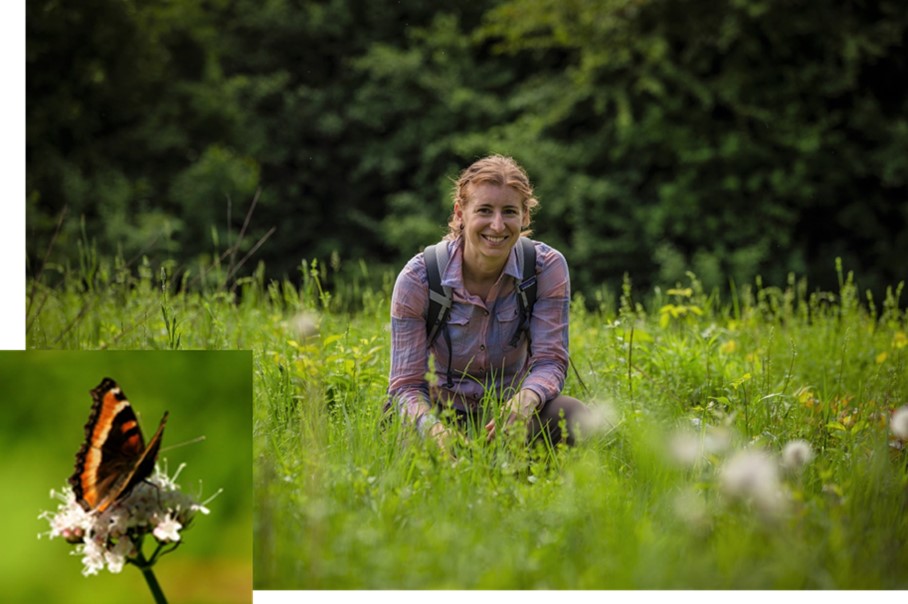
Heather Kharouba is an Associate Professor of Biology at the University of Ottawa, Ottawa where she studies global change ecology. Heather earned her PhD at the University of British Columbia before completing a Postdoctoral Fellowship at the University of California Davis. Her lab’s research focuses on how and why species are responding to global change and what those responses mean for ecological communities, with a particular focus on plant-insect interactions. They are interested in the impacts of global change on a variety of taxa with an emphasis on understanding cross-scale effects of climate change using multiple methods (e.g., lab experiments, museum collections). To learn more about her lab’s research, visit: kharoubalab.weebly.com.
The Role of Non-native Plants in the Nectar Diet of the Monarch butterfly (Danaus plexippus)
Heather Kharouba
Associate Professor of Biology, University of Ottawa
The iconic eastern migratory monarch butterfly is currently listed as a ‘species of special concern’ under Canada’s Species at Risk Act and are likely going to be up-listed by the government in council to ‘endangered’. One recovery action currently being considered is the restoration of migratory staging habitat, which includes the nectaring flowers that monarchs use to fuel their energetically expensive migration south to Mexico every fall. To date, we have little idea about which plant species provide the greatest benefit to the monarch in terms of energy acquisition from nectar. In many human modified areas, there is an increased abundance of non-native flowering plants available as nectar sources. We have little idea how much monarchs use non-native nectar and if it provides a similar nectar benefit to native wildflowers. Using field surveys around Ottawa ON, and greenhouse growth trials, our work shows that 58% of all foraging visits by monarchs were on non-native plants and 4/5 of the most frequently visited plant species were non-native. Preliminary experimental results show that non-native plants may provide lower quality nectar than native species. This suggests that there might be a mismatch between usage frequency and nutritional benefits of nectar. This knowledge will help direct restoration activities like planting native flowers and non-native plant management.
Spotlight Talk: Carlotta James

Carlotta James is an eco-landscaper, community builder, and long-distance runner. Carlotta graduated from the University of Toronto with an Honours B.A. in International Relations and Political Science, where she subsequently was awarded a scholarship under the Canada-China Scholars’ Exchange Program to study Mandarin Chinese at Yunnan University in Kunming, China. In addition to her academic interests, Carlotta’s curiosity in the global community have led her to work and travel in China, South Africa, England, Australia, and Mexico for six years. Carlotta currently lives in Peterborough with her family, where her passion for environmental sustainability is evident through her community work with Peterborough Pollinators. Carlotta is co-founder of Three Sisters Natural Landscapes, an eco-landscaping social enterprise dedicated to creating pollinator-friendly gardens in Peterborough and the Kawarthas. Carlotta is also co-founder of the Monarch Ultra, an international relay run, documentary and conservation project aimed at connecting communities across North America with common goals of Earth stewardship & biodiversity conservation. Carlotta hopes to inspire others through her passion for running as a way of reconnecting with nature and with community.
Amplifying Local and International Environmental Action
Carlotta James
Monarch butterflies, like all pollinators, need healthy ecosystems for their survival. Though even more important to their survival is the need for connected wild spaces with native flowering plants that extends from Canada, through the USA, and finally to Mexico, to the monarch butterfly biosphere reserve. However, monarch butterfly populations (and all pollinators), are in steep decline due to invasive species, pesticide use, climate change, and habitat loss. So how can advocacy and awareness at the local and international level amplify our roles and responsibilities as earth stewards to protect species at risk, such as monarch butterflies, before it is too late? My intention to promote conversations and actions around biodiversity conservation in order to inspire positive, long term change will be shared during the presentation.
Presentations
Concurrent Sessions
DSV: Through an Activist’s Lens
Sheila White, Friends of Farquharson
With respect to community engagement on the issues concerning invasive species of plants, how effective are these community engagement efforts from an informed resident’s perspective? In senior activist Sheila White’s neighbourhood and Toronto generally Dog-Strangling Vine (DSV) is rampant. Thus began her journey three years ago to seek advice and support for developing a local eradication project. The audience will hear about the steps taken to liaise with city staff, a conservation authority, politicians, a local industry as well as OIPC, and how each of them responded. Photos and video accompany the presentation.
Community-led Stewardship on Public Land
Anna Meng, Toronto Nature Stewards
Despite the importance of nature in the City, Toronto’s natural areas are at an ecological tipping point. Toronto Nature Stewards (TNS) believes that through community-led stewardship, we can build sustainable and positive relationships with the land we live on.
Over the past two years TNS has collaborated with the City of Toronto Urban Forestry to develop a scalable, volunteer-led, model of stewardship. By the end of 2022, we’ve experienced great success through working towards the removal of 12 invasive plant species spanning across 74 hectares of natural area. While TNS provides the training and framework, the real on-the-ground work is done by our growing community of 63 Lead Stewards and 500 volunteer stewards.
Research Partnerships in Community Stewardship
Emily Heidendahl, City of Toronto, Natural Environment and Community Programs, Urban Forestry
The Community Stewardship Program is a City of Toronto Forestry volunteer program with eight restoration sites throughout the city. Volunteers in this program meet weekly to learn about native plants, invasive species, restoration, and ecological monitoring. In 2018, the City of Toronto partnered with EcoSpark and Humber College to engage Community Stewardship Program volunteers in a community science research project to explore volunteer restoration methods. The project sought to study manual removal methods of invasive common reed (Phragmites australis). This presentation will introduce City volunteer stewardship programming, explore the results of this study, and introduce a new community science research partnership on Dog-strangling vine (Vincetoxicum rossicum).
Bye Bye Buckthorn
Sharon Boddy, Friends of Carlington Woods/Tree Fest Ottawa
In the spring of 2022, the Friends of Carlington Woods with its partner, Tree Fest Ottawa received a grant from the Invasive Species Centre to remove buckthorn from a small area of the Carlington Woods and immediately replant with native species. The Carlington Woods is a 22-ha urban forest in central Ottawa. The area is close to one of the Woods’ entrances and is directly behind the Clyde Bee & Butterfly Patch, a small pollinator garden that was started in 2020. The Patch was one of the reasons this site was chosen. By removing the buckthorn, it will reduce its spread into the pollinator garden. We waited until October to clear the area so as not to disturb any nesting birds. It took five days to clear ~90 m2, representing about 200 person hours. Volunteers with the Friends of Carlington Woods and Friends of Hampton Park, as well as several Grade 6 Revel Academy students, and other local residents helped out. When we were ready to plant, we laid the plants out according to their shade and sun needs. The species are: Smooth serviceberry, Grey dogwood, Red osier dogwood, Ninebark, Nannyberry, Bladdernut, Black cherry (tree), Butternut (tree). We’ve numbered the plants so that we can track their health. We see the potential of the site to contribute to several research areas, including soil health, entomology, climate change, and invasive species control.
Engaging the Community in Responsible Stewardship at Oshawa Second Marsh
Wioletta Walancik, Susan Ellis, Friends of Second Marsh
The Friends of Second Marsh’s (FSM) “Let’s De-phrag the Marsh! Project” is a multi-year plan of collaboration, fundraising and Invasive Phragmites management actions on the Provincially Significant Wetland Oshawa Second Marsh, adjacent natural area McLaughlin Bay Wildlife Reserve and their watersheds.
A key part of this project is community engagement. Giving local charity and non-profit FSM a focal point to reach out and engage our community, this project requires many levels of collaboration. Through these interactions we strengthen our relationships with community stakeholders and connect with volunteers.
Most importantly, through this project we demonstrate to our community that positive impacts to the environment are possible and that with thoughtful preparation and collaboration, even big problems like Invasive Phragmites in our wetlands can be addressed. In our presentation, we will give of examples of not only what we do but how we do it.
Examining the Impacts of Invasive Species on Canadian Municipalities
Emily Posteraro, Invasive Species Centre
The National Invasive Species Municipal Expenditures Survey, conducted by the Invasive Species Centre and Environment and Climate Change Canada in 2021, aimed to gain a better understanding of the impact of invasive species on municipalities in Canada. Respondents from 231 municipalities gave insight into municipal spending and priorities with regards to invasive species across the country. Based on the Survey data, the estimated annual municipal expenditures on invasive species in Canada is $247.9 million. Out of the top five invasive species most frequently listed by respondents as a priority, four of them were invasive plants. Results from this survey examined how expenditures are allocated among different categories of invasive species activity (detection, prevention, control and management, habitat restoration, and research and science), what non-financial costs are incurred to prevent, detect, and manage invasive species, what the priority species are across different taxa, and the top emerging species of concern. In this presentation, these and other key quantitative and qualitative Survey results will be shared, with an emphasis on invasive plants and municipal impacts and priorities in Ontario.
An Indigenous Approach – Land healing & Reciprocity with Western Students
Zakara Stampp, Western University, Department of Geography & Environment
Zakara has been a teaching assistant to an Indigenous Studies course (IS4023) at Western University with Dr. Desmond Moser and Clint Jacobs as course instructors. Instructor Clint hails from Bkejwanong (Walpole Island First Nation) and is a respected member of the community. He brings his traditional knowledge to the table and shares with students his Indigenous perspectives on reciprocity, restoration, invasive species remediation, land stewardship, and connections to, and responsibilities to, land and water. For the Fall 2022 semester, this class of students has participated in land restoration of an area near Ross Park, located in London, Ontario near the university. For this conference, Zakara will present an overview of some student projects, reflections and share the progress we have made on land restoration and invasive plant removal at the Spencer tract, highlighting Clint’s Indigenous teachings and Dr. Moser’s expertise in Canadian invasive plant species.
We are working to heal the land by removing invasive, non-native plant species (ex. Crown vetch) and replanting traditional native plants (ex. Allium cernuum, Andropogon gerardii, Aster laevis, Liatris spicata), supporting their continued growth. We learn about various medicinal & traditional, Indigenous uses of these plants from Ron Sans, and Indigenous knowledge keeper from Bkejwanong and instructor Jacobs. We continuously work to connect with the land and give thanks for its offerings. This has been an ongoing journey with Dr. Moser & instructor Jacobs, and the current class is building on land restoration completed by previous classes. Students write weekly reflections based on their field work, detailing the emerging thoughts, feelings and emotions that developed through their experiences. Throughout this process, Dr. Moser broadens student knowledge of invasive plant species while instructor Jacobs broadens knowledge of traditional Indigenous plants & techniques to continue land healing, even outside the bounds of the Spencer tract. Each student chose an individual project, within the scope of the course philosophy and community needs identified by members of the Walpole Island Heritage Centre and focus on some aspect of land restoration or cultural protocol, with an ethic of reciprocity.
Using Invasion History to Quantify Equilibrium in Over 250 Invasive Plant Species in North America
Maisy Roach Krajewsky, Heather Kharouba, Tyler Smith, University of Ottawa
Species distribution models are a widely used approach in ecology and conservation biology. Despite the implications for the predictive accuracy of these models, the assumption that species are in equilibrium with their environment (i.e., they occur in all suitable areas) is poorly tested. This assumption is even more likely to be violated for introduced species that are still in the process of colonizing suitable environments. In the limited cases where this assumption is tested, researchers do not typically incorporate a temporal analysis of an invading species (i.e., invasion history), but rather evaluate the assumption from a snapshot in time. Here, we used patterns in expansion to quantify and describe equilibrium for over 250 invasive plants species (i.e., trees, shrubs, and forbs) in North America. By comparing the climates occupied by species in their native and introduced ranges throughout their invasion history, we found that only a small subset (15.5%) of species were actively expanding at a constant rate, with no evidence of approaching equilibrium in their introduced range. Of the remaining species, half showed evidence of having reached equilibrium, identified by the presence of at least 30 years of stabilized expansion in their introduced range. The other half of species showed evidence of slowing their rate of expansion in recent years but have not yet reached a stable equilibrium. Of the species found to have reached equilibrium in their introduced range (42.2%), we determined that it took approximately 10 to 150 years (82.6 years on average) to do so. To our knowledge, this study represents one of the first to use a temporal context approach to describe the equilibrium status of a large group of introduced species. The novel approach taken in this study can be used to determine if and when an invasive species has reached equilibrium in its introduced range, and in turn contribute to the development of more accurate predictions of invasive species invasions.
Reconstructing the 130-year history of Dog-strangling vine in North America
Tyler Smith, Agriculture and Agri-Food Canada
Anticipating the spread of invasive species is critical for effective management. However, widely-used species distribution modelling (SDM) techniques assume that species are in equilibrium with their environment (i.e. they already occur in all suitable environments). This assumption is likely to be violated for an actively invading species, which can have serious consequences for the reliability of model predictions. We hypothesize that over the course of an invasion, the spread of an alien species increases until it reaches its equilibrium distribution, at which point sufficient data is available to construct reliable SDMs. We tested this hypothesis with the invasive plant Dog-strangling Vine (DSV). We found that DSV had reached equilibrium in environmental space 80 years after introduction, but continues to expand its geographic range. SDM performance was poor in the first 30 years following introduction, but improved over time. Once DSV had reached its environmental equilibrium, SDM performance for records from the invaded range matched those of SDMs built from native records. Our approach addresses shortcomings in the current approach to forecasting biological invasions and provides new tools for assessing species’ niche shifts between their native and introduced ranges.
Lightening Talks
Leaf-gall Formation in Invasive Knotweed and its Implications for Biological Control
Ian Jones, University of Toronto
The psyllid, Aphalara itadori Shinji (Hemiptera: Psyllidae), is a biological control agent against invasive knotweed species in Europe and North America. Despite many releases, successful establishment of the agent has never been confirmed. The slow establishment of A. itadori appears to be predominantly the result of nymphal mortality, either through desiccation, predation, or the adaptation of captive populations to low stress environments. In 2016, CABI UK collected a new line of the psyllids from the Murakami prefecture in Japan, where it was observed causing severe leaf-roll galling on Fallopia bohemica Chrtek & Chrtková (Polygonaceae). The induction of leaf-roll galls by Murakami psyllids on F. bohemica has the potential to alleviate some or all of the observed nymphal mortality factors. We conducted a series of growth chamber experiments to explore the psyllid behaviors that initiate leaf-roll galls, and the ways in which the galls might benefit the psyllids. Artificial leaf-roll galls were consistently utilized by developing A. itadori nymphs, and contributed to their survival. Leaf-roll galling in F. bohemica was predominantly initiated by early instar nymphs of A. itadori, and only occurred when leaves were attacked at a very early stage in their development. Our results suggest that releases of A. itadori should be conducted early in the growth season, or in conjunction with cutting treatments, so that developing nymphs have access to newly emerging leaves. Additionally, our results provide motivation to seek additional lines of A. itadori that may impact other invasive knotweed species in the similar ways.
Waterfowl Forage Quality Increases Following Herbicide Treatment
Megan Jordan, University of Waterloo
Phragmites australis, invasive common reed, has spread exponentially at Long Point Peninsula since the mid-1990s. To combat its spread and re-establish native vegetation, a P. australis-control program was launched in 2016. To date, it is unknown how this treatment has affected the quality of roots, seeds, and tubers available for waterfowl foraging. Our objective was to survey vegetation present in P. australis-dominated marsh, P. australis-dominated marsh that was treated in 2021, and native reference marsh to compare the waterfowl foraging quality between each vegetation type and to determine if herbicide treatment of P. australis has improved foraging quality. In August 2022, vegetation point-intercept surveys were conducted along 50-m transects at Big Creek National Wildlife Area and Long Point National Wildlife Area, with 16 transects from each vegetation type. A waterfowl foraging quality index for each transect will be calculated to determine the quality of roots, seeds, and tubers available for foraging in each vegetation type. Preliminary results suggest that foraging quality is lowest in P. australis-dominated marsh and highest in reference marsh. The foraging quality in treated sites is higher than P. australis-invaded marsh sites, meaning that treatment has increased waterfowl foraging quality. However, treated marsh sites were often overrun with secondary invasive species, such as European frog-bit, lowering its foraging quality index and resulting in a lower index in treated sites than reference marsh sites. These results will be important in determining the indirect effects that P. australis treatment may have on marsh waterfowl foraging.
Posters
Evaluation of Invasive Species Management at Trent University: A Community-based Research Project
Kira Nixon, Brittany Finigan, Ryan Sisson
This project, hosted by Trent University’s Nature Areas Stewardship Committee (NSAC), is working to review past and present invasive species management practices at Trent University. NSAC is an advisory committee for the Facilities and Grounds Advisory Committee (FGAC) which manages the natural areas on campus. This ongoing project builds on previous work evaluating the ongoing monitoring of common buckthorn (Rhamnus cathartica) and explores the perspectives of members of the NASC and FAGC to identify goals and next steps for invasive species management within the Trent Nature Areas. Focus groups will explore the perceptions, knowledge, and attitudes of those who play a part in the management of invasive species on this property. Information gathered from this newest phase of the study will summarize current management and monitoring practices and is intended to include suggestions for invasive species management and monitoring, with an interest in expanded student involvement in invasive species management. This project is an undergraduate community-based research project hosted by Trent University’s School of the Environment and the Trent Community Research Centre.
Exploring the Ecology of Vinca minor: A Common Urban Forest Invader in North America
Katja Karhi, Algoma University
Invasive species are a major driver of ecological change worldwide and understanding the underlying mechanisms of invasion is critical to preventing and managing invasions. Vinca minor is an understudied invasive plant in North American urban forests. The ecological impacts of V. minor and the mechanisms which make it such a successful invader are largely unknown. We conducted three studies to assess the impacts and mechanisms of V. minor invasion. First, we conducted a field survey in invaded and uninvaded urban forests to determine whether V. minor impacts native plant communities. Second, we conducted a growth chamber experiment to test for potential allelopathic effects of V. minor foliage. We grew lettuce watered with leachate from V. minor foliage or DI water. Finally, we conducted a greenhouse experiment to test for soil biotic legacies of V. minor, where V. minor may alter soil microbial communities in a way that benefits its own growth. We grew V. minor in soils inoculated with invaded or uninvaded soil from four urban sites and a control with only sterile soil. In the field survey, we found that V. minor cover was associated with reduced plant species diversity, as well as reduced abundance of sugar maple. Interestingly, sugar maple seedlings growing inside V. minor invasions had higher abundance of arbuscules from arbuscular mycorrhizal fungi in their roots. These results suggest that V. minor may have negative impacts on native plant communities, so we aimed to investigate potential mechanisms. In the allelopathy experiment, we found that lettuce watered with leachate from V. minor foliage performed better than the controls with DI water, suggesting that the potential impacts of V. minor on native plants is unlikely to be due to allelopathic effects of foliage. In the final experiment, we found that V. minor grew better in live field soil than sterilized soil suggesting that it benefits from microbes in the soil, likely arbuscular mycorrhizal fungi. However, no differences were observed between invaded and uninvaded soils suggesting that V. minor does not create a self-promoting soil biotic legacy. Research should continue to investigate other potential mechanisms of V. minor invasion.
Our 2023 Sponsors! Thank you for your generous support!
Staff Funding


Silver Sponsor
Bronze Sponsor
